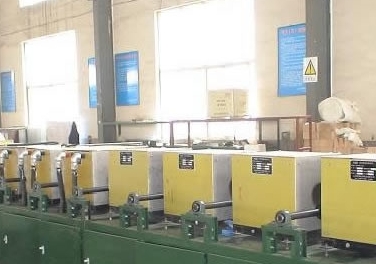- 08
- Feb
كيف تحسب قوة فرن التسخين التعريفي؟
كيف تحسب قوة فرن التسخين التعريفي؟

Generally, the empirical method is used to estimate the required power density of the فرن التدفئة التعريفي. يوضح الجدول 2-16 كثافة الطاقة المطلوبة لأعماق الطبقة المتصلدة المختلفة لقطع العمل المصنوعة من الصلب الكربوني بترددات مختلفة. تعتمد طاقة جهاز الإمداد بالطاقة على قيمة كثافة الطاقة (P) المحسوبة بالكيلوواط / سم 2 على سطح قطعة العمل ومنطقة التسخين الأولية A بالسم². يعتمد اختيار كثافة الطاقة على مساحة سطح التسخين وظروف التبريد التقنية. كلما كان التردد الحالي أقل ، كلما كان قطر الجزء أصغر وعمق طبقة التصلب المطلوب أقل ، كلما زادت كثافة الطاقة المطلوبة. الجدول 16-0.6 هو قيمة كثافة قدرة الإدخال الموصى بها. عند استخدام طاقة صوت عالية التردد ، P عادة ما تكون 2.0 ~ 0.8kW / سم². عند استخدام مصدر طاقة بتردد متوسط ، تكون P عادة 2.5 2kW / سم². طبقة صلبة عميقة 16-XNUMX طبقة صلبة من الصلب الكربوني تم الحصول عليها عند ترددات ودرجات كثافة طاقة مختلفة.
الجدول 2-16 عمق الطبقة المتصلدة من الفولاذ الكربوني بترددات مختلفة وكثافات طاقة مختلفة
| تردد
/ كيلو هرتز |
عمق الطبقة المتصلب | كثافة طاقة منخفضة | كثافة طاقة عالية | |||
| mm | in | كيلوواط / سم2 | كيلوواط / بوصة2 | كيلوواط / سم2 | كيلوواط / بوصة2 | |
| 450 | 0.4،1.1 – XNUMX،XNUMX | 0.015 -0.045 | 1. 1 | 7 | 1.86 | 12 |
| 1.1-2.3 | 0.045-0.090 | 0.46 | 3 | 1.24 | 8 | |
| 10 | 1.5-2.3 | 0.060 – 0.090 | 1.24 | 8 | 2.32 | 15 |
| 2.3-4.0 | 0.090-0.160 | 0.77 | 5 | 2 | 13 | |
| 3 | 2.3 -3.0 | 0.090-0.120 | 1.55 | 10 | 2.6 | 17 |
| 4.0-5.1 | 0.160-0.200 | 0.77 | 5 | 2.17 | 14 | |
| 1 | 5.1 | 0.200 -0.280 | 0.77 | 5 | 1. 86 | 12 |
| 6.1 -8.9 | 0.280-0.350 | 0.77 | 5 | 1. 86 | 12 | |
| تبريد العتاد على طول ملف تعريف السن | 0.4-1.1 | 0.015 -0.045 | 2.32 | 15 | 3. 87 | 25 |
① tooth profile along quenching, in. 3 – 10kHz proposed to use a current frequency of the low power density.
The same hardened layer depth value can be achieved with different power densities and different heating times.
Higher power density and shorter heating time are suitable for lower current frequency; lower power density and longer heating time are suitable for higher frequency. The former heats the surface of the workpiece and conducts less heat to the center part, and the thermal efficiency is higher; while the latter heat conduction is enhanced, and the thermal efficiency is lower. From the perspective of energy saving and that the transition zone of the workpiece hardened layer should not be too thick, the heating time of the surface hardened workpiece should preferably not exceed 10s, and it should not exceed 15s if it is slightly longer , except for special requirements.
Many modern induction hardening machine tools are equipped with energy monitors to control the depth of the hardened layer of the quenched workpiece in kw · S . Therefore, according to the required kW · s value, first set the heating time s, and then use (kW • s) /s to find the required kW value to select the required induction heating furnace power supply rated power value (on the energy monitor kW·s, its kW is generally the oscillation power).
